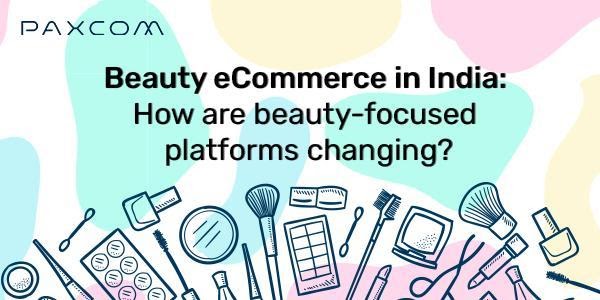Digitalization has changed almost every industry globally over the past decade, and you can’t help but wonder how this has impacted the beauty industry in so many ways, from creating more innovative marketing strategies to promoting it on different platforms to building trust relationships with customers.
The beauty and self-care industries have experienced tremendous growth in market sales, and now they are taking over beauty e-commerce. You must be wondering how it happened.
The answer lies in many factors. The first is the digitalization growth in the sector. During the pandemic, online retailers came up with certain advancements to their processes that may have proven beneficial for both them and the customer. One of the changes was to make the product experience look as good as the touch and feel of a brick-and-mortar store.
Beauty products are usually trusted to be bought in stores, making the customers lean towards getting a digital experience. Brands using such tactics can attract potential customers to buy their products online.
Through technological advancements in eCommerce, we can now replicate the touch and feel of mainstream beauty shopping through the touch and feel of mainstream beauty products like lipstick, eye lenses, and other makeup products directly on their faces. Therefore, technology contributes to bridging the gap between the seller and the customer.
The beauty industry is rising as one of the leading playgrounds for customer goods, and in an era when the world is being hit by a pandemic, this is what beauty eCommerce platforms must do to stake their claim in the market.
Table of Contents
Beauty eCommerce Category Evaluation, Market Share, and Current Financial Trends in E-commerce
The growth in the beauty and personal care market was one of the topics of discussion during the pandemic. In 2016, the beauty and self-care market was worth around Rs 87,000 crore. In the course of the pandemic in 2020, it grew by a little over Rs 1.1 lakh crore.
It is expected to grow to over Rs 2 lakh crore by 2025, as predicted by Redseer. In the last four years, the online beauty and personal care categories have grown from Rs 1,400 crore in 2016 to Rs 9,100 crore.
Online purchases in India have increased fourfold, from 2 percent to 8 percent, but they are still less compared to countries like the US and China, where they are 30-40 percent, which illustrates that there is room for growth for brands within this market.
Growth of eCommerce channels selling only beauty products
According to a Redseer report, by 2025, eCommerce in India will be growing at a CAGR of 25% and is on the verge of becoming one of the top five global markets by revenue in the world.
With the introduction of beauty platforms like Nykaa on a path to the daily customer, the beauty eCommerce industry has been flooded with funds, and with the vast majority of the increase in customers, the time is suitable for the next level of growth.
Reasons for Growth
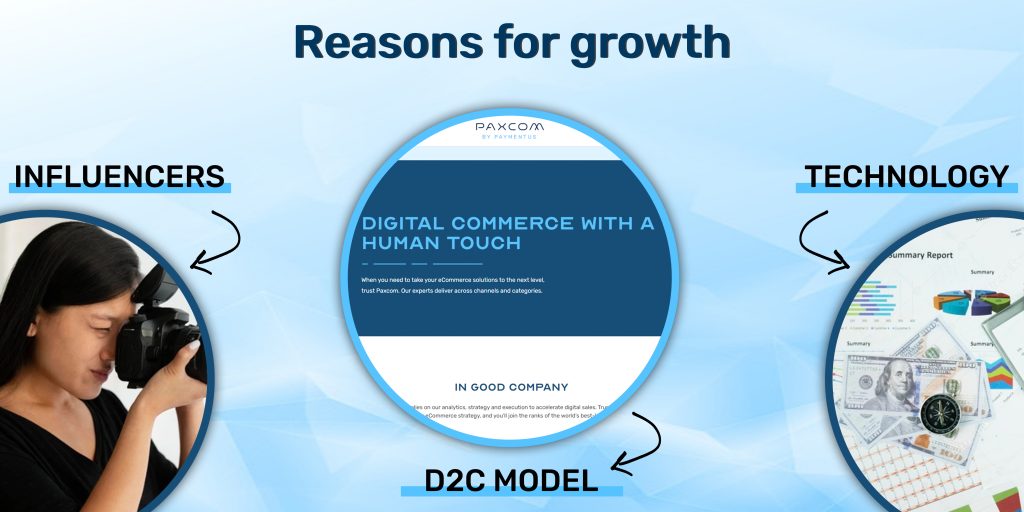
1. Influencers
With the easy accessibility of the internet and smartphones, social media has been a crucial source for providing creators who are encouraging more people towards new products or services and have created massive fan bases through it.
They are generally termed “influencers.” These creators form opinions about your product or service and create content for the public, such as tutorials, expert advice, and brand encouragement. Customers who buy beauty products spend a lot of time online, with 93 percent checking in more than once a month.
Influencer marketing has recently become a powerful tool in the beauty and self-care market. With social media being at its peak, influencers are able to attract new and potential customers to brands as they have loyal followers who perceive them as experts in their field of view.
By going through their reviews, the customers can analyze how they have reacted by using the same and are able to gain more confidence and trust in the brand, which the brands see as a growing opportunity to capitalize on.
Brands like Mama Earth, which sells natural and chemical-free skincare products, adopted this strategy to create awareness about their products through influencer marketing by running their vast champions on social media platforms like YouTube, Instagram, and Facebook.
The company has grown 6.5x in the financial year 2020 from the year 2019 by spending more on advertising and marketing campaigns.
Platforms like Amazon also launched the # fountItOnAmazon strategy, where influencers suggest or recommend their favorite products to the audience, creating a sense of trust towards the brand and boosting sales.
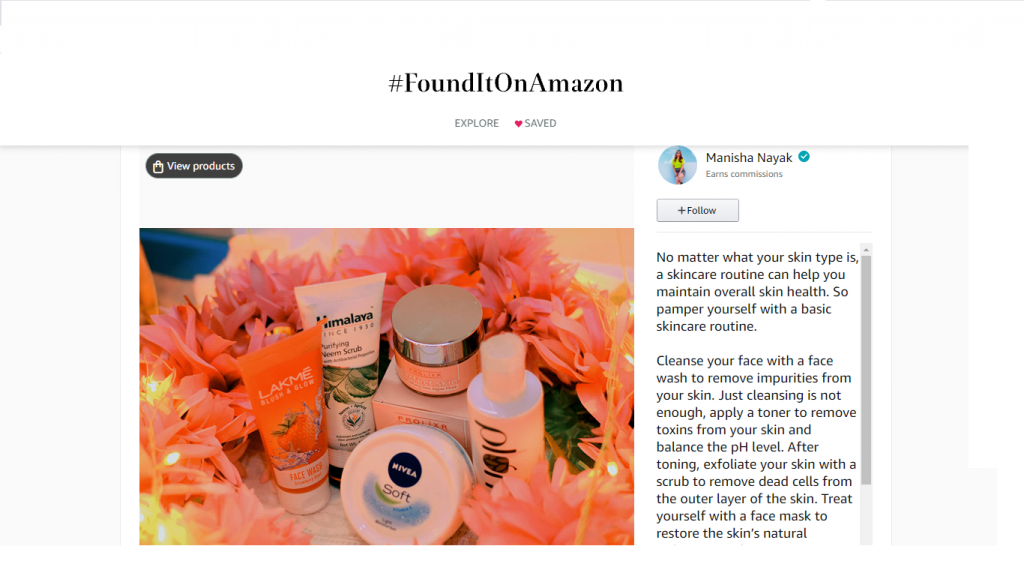
2. D2C Model
The D2C model has been gaining popularity recently; these are determined to attract their customers online. With the lockdown imposed in most countries, brands have found a new way to directly sell their products to customers.
This change, i.e., shifting from traditional methods to direct selling from their own websites, has promoted the adoption of the D2C model.
The D2C model is already a hit in the United States and other countries as it provides the customer with a personalized, need-to-order basis. Some premium brands also provide subscribe and save offers curated personally for the customers in the form of a monthly box or a subscription, providing the user and brand a great synergy that leads to a happy customer.
Indian brands like Sugar, Ustraa, and Bombay Shaving Company are using these models, gaining a lot of visibility, and having an emerging user base.
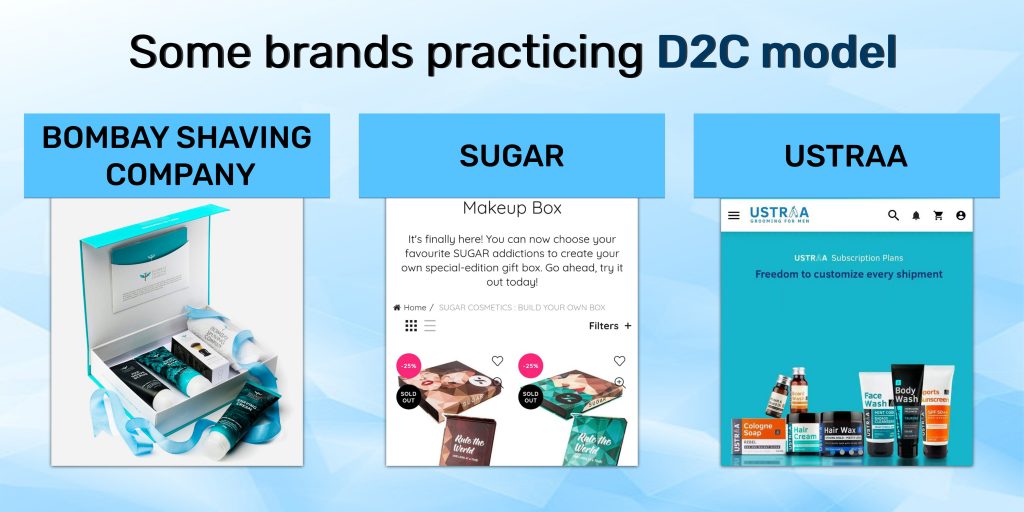
Beauty brands are moving fast towards adopting e-commerce strategies that are aligned to customer behavior online. There was a hike of 94% in D2C websites during the lockdown, whereas there was a 58% increase in marketplaces.
3. Technology
The evolution of technology has played a significant role in how we usually interact daily, be it making us more socially aware or revamping our lifestyles from the ground up. People have become more inclined towards self-care than before, changing even the way we purchase things.
We can now have suggestions and choose between a vast product range with reviews from influencers as well as previous buyers. Customers are buying everything from homemade organic beauty products to their monthly skincare products online.
Every day, we discover new emerging brands and products on different beauty platforms like social media feeds or YouTube ads. And to our astonishment, the reviews from people on the internet are proving to be the most significant factor in the sale and success of a product.
Customers’ attention has shifted to global markets as a result of easy access to resources such as videos and reviews online. As a result of this advancement in technology, e-stores like Nykaa are providing a broad range of international beauty brands.
The segment is largely driven by touch and feel, and these marketplaces are also making efforts to close this gap.
With the support of increasing disposable income and economic strength, this field has allowed businesses to look forward to a new opportunity in the beauty and cosmetic vertical.
What are the driving factors behind Beauty eCommerce category sales?
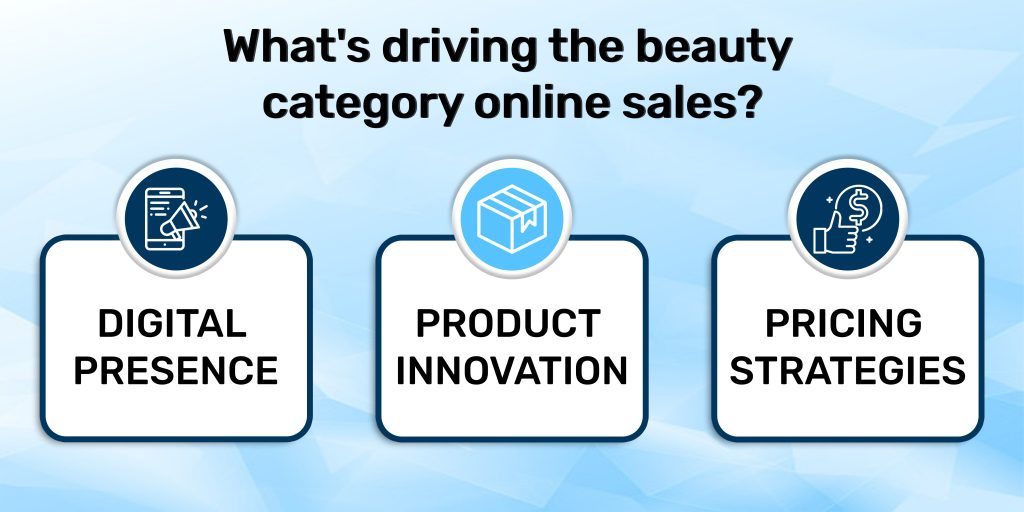
- Digital presence: the visibility of a brand online is its digital presence. The more traction it gets online, the more chances it has to grow.
- Product innovation: Products are now being created while keeping the user’s needs in mind. Brands are focusing on how products can be more helpful to people by using methods like surveys, in-house research, customer reviews, and many others.
- Pricing strategies: With the market offering several different alternatives within a single category of a product, brands are forced to initiate competitive pricing, still keeping in mind the growth as well as profit.
India’s Beauty eCommerce Key Players
- Nykaa
- Purplle
- Smytten
- Amazon
Final Thoughts
As we see, the beauty eCommerce market is flooded with new players every day. Existing brands might have to adjust to the current perspective and policies of the growing market. Viewing the point that Nykaa has introduced the men’s grooming page to its platform, which is an often ignored aspect, might prove to be a game-changer.
Over the years, Paxcom has helped many brands launch and grow their brands on Amazon and other major e-commerce platforms. Whether your brand is an already established name or is planning to enter the market, Paxcom has got you covered.
To learn more about how we assist brands in creating a solid presence, growing, and skyrocketing sales, contact us at info@paxcom.net

